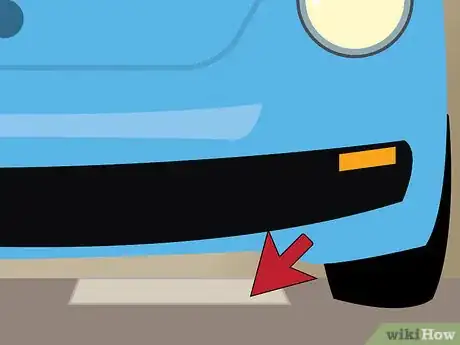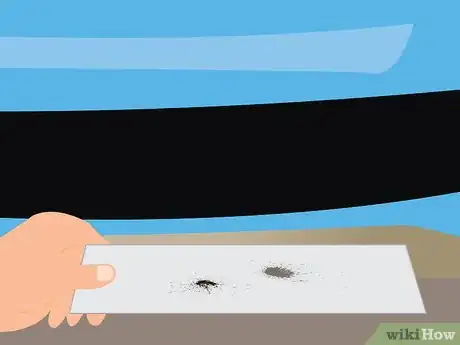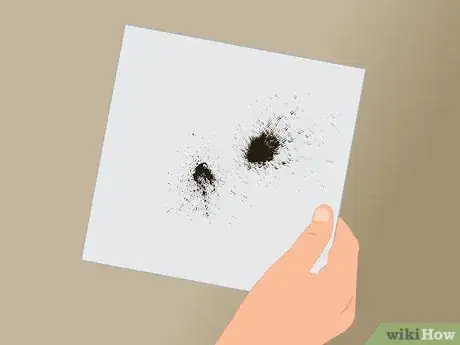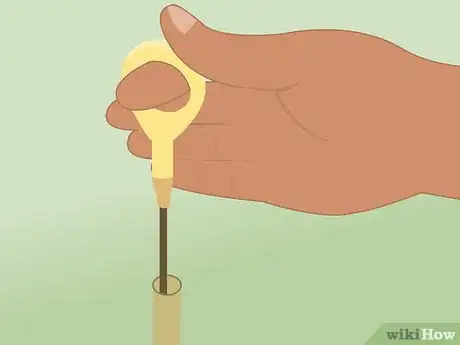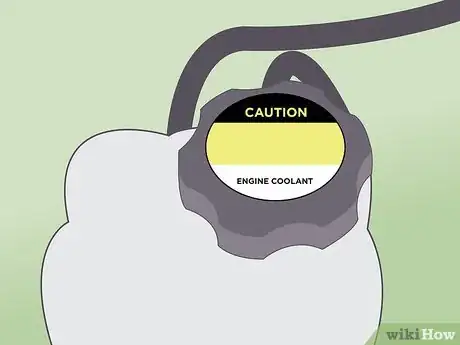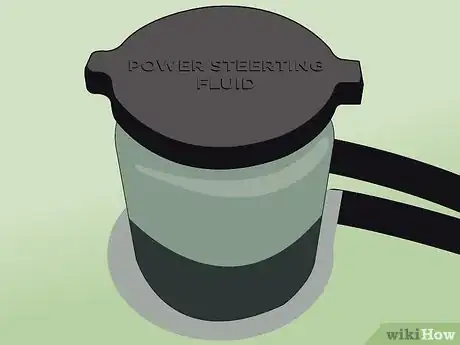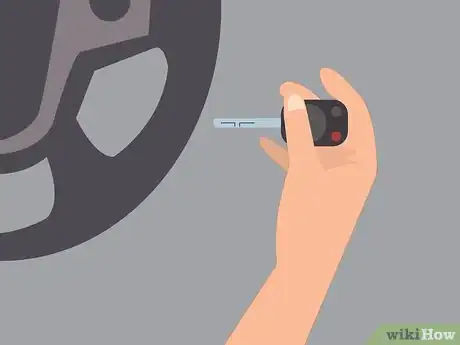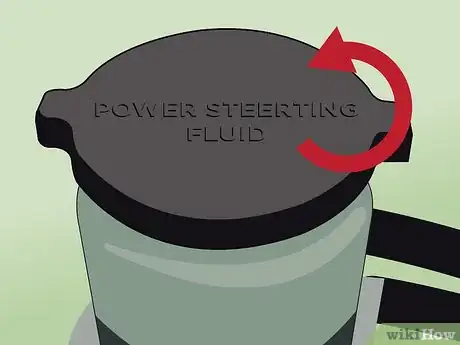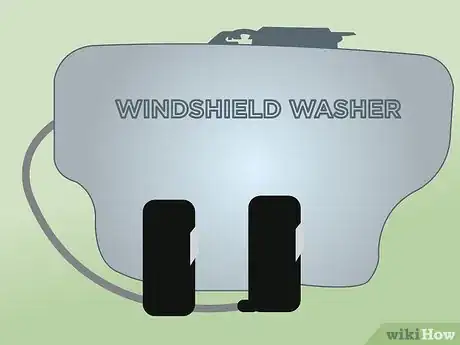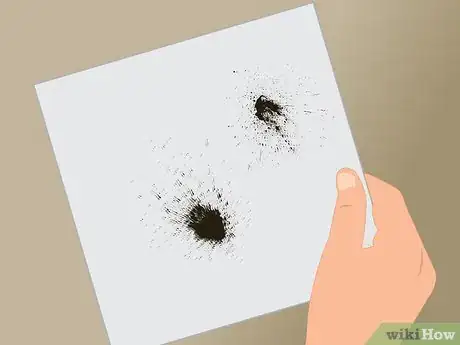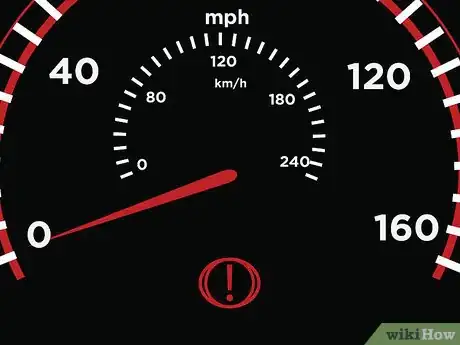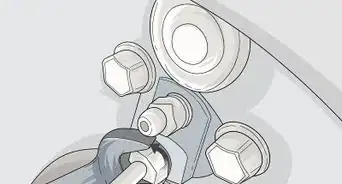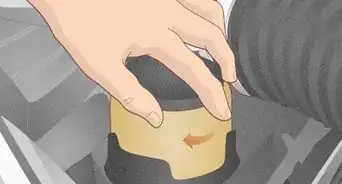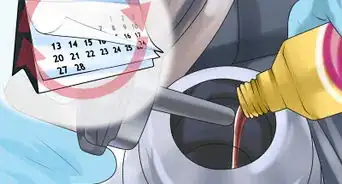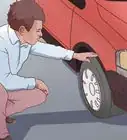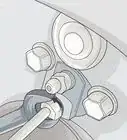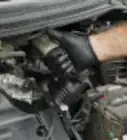This article was co-authored by Jason Shackelford. Jason Shackelford is the Owner of Stingray Auto Repair, a family owned and operated auto repair shop with locations in Seattle and Redmond, Washington. He has over 24 years of experience in auto repair and services, and every single technician on Jason’s team has more than 10 years of experience.
wikiHow marks an article as reader-approved once it receives enough positive feedback. In this case, 92% of readers who voted found the article helpful, earning it our reader-approved status.
This article has been viewed 123,599 times.
Various fluids are essential for your vehicle to remain in good working order. Sometimes, when a part begins to leak fluid, it can be difficult to detect. There are a few tricks to catch a leak before it causes any major problems.
Steps
Detection by Spots
-
1Place cardboard, newspaper, or aluminum foil under your car. Are you noticing stains or puddles under your car, but aren’t sure what they are? This method can provide valuable information about any leaks your car might have.
-
2Allow the vehicle to sit parked overnight. This will allow time for any leaks that may be present to drip onto your material.Advertisement
-
3Examine whatever material you put down. Note the location of any spots in relation to the car's tires. Knowing this can narrow down possible leaks.
-
4Inspect the color and consistency of the spots. The fluids in your car are all different. They also have different colors and textures.[1]
- If you notice light brown or black stains that are of medium consistency you are leaking oil. A few drops is normal, but anything larger should be investigated.
- Reddish, light brown, or black stains that are near the center of the car is usually transmission fluid.
- If the color is similar to the transmission fluid (or could also be a purplish hue), but is located in the front of the car, it is your power steering fluid.
- Finding a pale brownish stain that is very slippery would indicate a brake fluid leak.
- A spot of brightly colored fluid is coolant (sometimes called "antifreeze"). Coolant comes in a variety of colors including green, red and yellow.
- If you find a clear liquid leaking out, this is sometimes condensation of air conditioner water that is normal. However, if this spews out continuously, you'll need to have your car's radiator and air conditioner system checked.
Checking the Reservoirs
-
1Check your owner's manual for the types of fluid you can check at home. The manual should also tell you how much of each fluid you need, and the type of antifreeze your car uses.
- If one of the warning lights is lit on your dashboard, you can check the manual for what the light indicates (usually oil or coolant). When one of these lights are on, it is a sign that a leak is possible.[2]
-
2Park your car on level ground. If you are pointing uphill or downhill the fluid in your tanks may read more or less than is actually there. It is important to check fluids on level ground.
-
3Find the engine oil dipstick. In many vehicles it usually has a yellow handle. If you have difficulty locating the dipstick, look in your owner's manual.
- Pull out the dipstick, wipe it off with a paper towel or rag, and reinsert it. Pull the dipstick out again and examine it horizontally. There are two indicator marks, one is the top level and the other the lower level. The amount of oil should be between these two marks.[3]
- Wipe off the dipstick with a towel and place it back into the reservoir tank if it is at a normal level. If it isn't between the two lines, this indicates a possible oil leak.
-
4Find your engine coolant tank. Do this when your engine is cold, and look to see if the fluid level is between the hot and cold marks on the tank.[4]
- Sometimes you may have to take off the radiator cap to see clearly, depending on the color of your tank. If the fluid is below the cold line or is completely empty, you definitely have an antifreeze leak.
-
5Locate your power steering fluid tank. This is the reservoir for your power steering fluid.
-
6Make sure the fluid is warm. Let your engine run at idling speed for a few minutes and turn the steering wheel back and forth several times.[5]
-
7Turn the engine back off. This should be done before proceeding to checking your fluid levels.[6]
-
8Remove the power steering cap by turning it counter-clockwise. The dipstick is usually built into the cap with an indicator mark. If the liquid is below this mark or there's none on the stick, then you may have a leak.
-
9Track down your master cylinder (brakes) reservoir. There should be a marker line on the side of the reservoir.[7] If you cannot see the fluid clearly, you can unscrew the cap and look inside.[8]
- If the fluid is very low or gone, you have a leak. It is normal to have a slight decrease in fluid if your brake pads are worn down. If you think this is the case, add fluid up to the fill line and monitor it for the next several days. If the amount of fluid changes you have a leak, otherwise you can assume that it was normal wearing of the brake pads.
- It might be a good idea to wipe away dirt from the top of the reservoir before opening it. If any dirt falls into the fluid, it can cause the internal seals of the master cylinder, as well as the brakes themselves, to fail.
- A "soft" pedal can also be a signal that your car is running low on differential fluid, which can be caused by a leak.[9]
-
10Check your windshield washer tank. Most tanks are transparent so you can see the fluid level easily. If you have a different type, consult your owner's manual for instructions.
- Since you deplete your washer fluid more frequently, it can be difficult to detect a leak, but if you just filled it a week before and it is very low or empty, you probably have a leak.
See a Mechanic
-
1Watch for indications of an ongoing leak. If you are experiencing a leak that you can't fix you should call a schedule your car in at a local mechanic's shop.
-
2Pay attention to your warning lights. Even if you think you have repaired the leak, you may still need to see a mechanic if any warning lights stay on. This could be a sign that the leak is not fixed, or that a sensor needs repaired.
-
3Go to a mechanic. If you are not able to easily repair the leak, you should see a mechanic. All of the fluids in your car are essential for the safe operation of the vehicle.
Community Q&A
-
QuestionI am using a lot more petrol than I normaly do, and there was a wet patch when I drove off this morning. Should I be concerned?
 Community AnswerYou may have a leak in the fuel line or tank. Have a mechanic check the car.
Community AnswerYou may have a leak in the fuel line or tank. Have a mechanic check the car. -
QuestionWhat do I do if I can smell gas when I drive, but don't see any leaks?
 Community AnswerStop trying to find it yourself and go see your mechanic. There's too many ways a fuel system can leak, and many are invisible.
Community AnswerStop trying to find it yourself and go see your mechanic. There's too many ways a fuel system can leak, and many are invisible. -
QuestionHow do I find out where a leak is coming from?
 Logic Johnson LafontaineTop AnswererFirst, you need to identify the fluid. Usually by color (red: transmission, brown and oily: motor oil, yellow/green/orange: coolant, clear/beige: brake fluid.) Then you can either examine the component in question for visible leaks or you can buy a leak detection kit. If it's a coolant leak, you can get a kit with fluorescent liquid that you pour into the coolant tank, then do a visual check again. Anywhere you can see the fluorescent liquid coming back out, that's where the leak is.
Logic Johnson LafontaineTop AnswererFirst, you need to identify the fluid. Usually by color (red: transmission, brown and oily: motor oil, yellow/green/orange: coolant, clear/beige: brake fluid.) Then you can either examine the component in question for visible leaks or you can buy a leak detection kit. If it's a coolant leak, you can get a kit with fluorescent liquid that you pour into the coolant tank, then do a visual check again. Anywhere you can see the fluorescent liquid coming back out, that's where the leak is.
Warnings
- Do not remove the radiator cap when the engine is hot. Doing so can cause serious injury.⧼thumbs_response⧽
Things You'll Need
- Gloves
- Paper towels
- Cardboard, newspaper or aluminum foil
References
- ↑ https://www.artofmanliness.com/articles/bookend-your-day-the-power-of-morning-and-evening-routines/
- ↑ Jason Shackelford. Auto Technician. Expert Interview. 11 June 2019.
- ↑ http://www.consumerreports.org/cro/2012/12/how-to-check-your-car-s-engine-oil/index.htm
- ↑ http://www.cartalk.com/content/car-talk-service-advice-coolant
- ↑ https://wheelzine.com/how-to-check-level-of-power-steering-fluid
- ↑ https://wheelzine.com/how-to-check-level-of-power-steering-fluid
- ↑ Jason Shackelford. Auto Technician. Expert Interview. 11 June 2019.
- ↑ https://www.dummies.com/home-garden/car-repair/brakes-bearings/how-to-check-a-vehicles-brake-fluid/
- ↑ Jason Shackelford. Auto Technician. Expert Interview. 11 June 2019.
